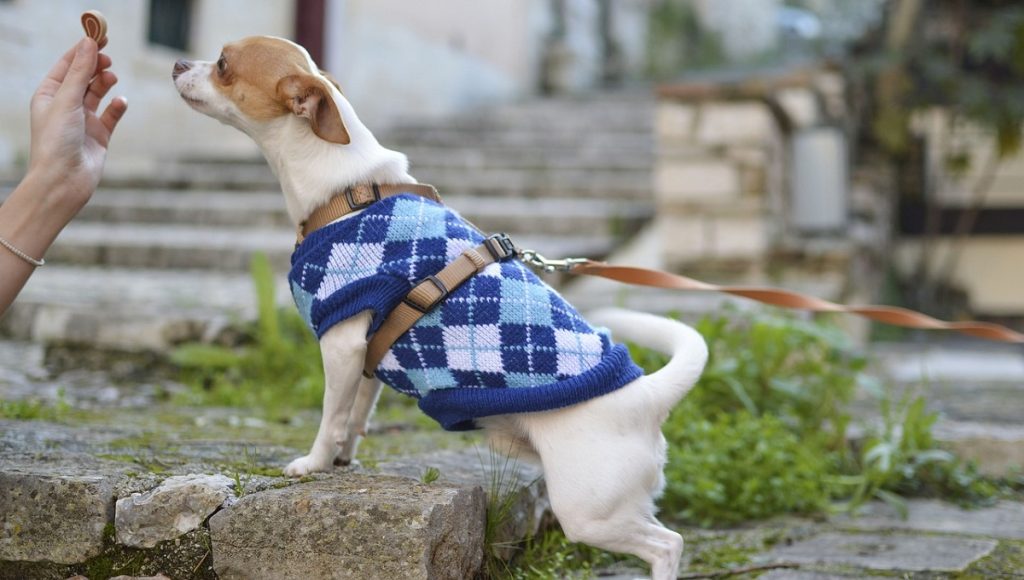Yes, changing dog food can cause blood in a dog’s stool. This is typically caused by dietary changes or sensitivities to ingredients in the new food. When the diet is changed too quickly or if the new food contains components that are not tolerated well by your pet.
It can lead to digestive issues such as diarrhea and softened stools which may contain traces of blood. Switching foods can also cause inflammation of the gastrointestinal tract leading to bleeding from ulcers or small tears along its lining.
To avoid this issue, it’s important to slowly transition from one type of food to another over 7-10 days while monitoring your pet for any signs of discomfort or distress during this process.

Why is My Dog Suddenly Pooping Blood?
If you’ve noticed your dog has started pooping blood, it can be a scary and confusing experience. While there could be several causes for this, it is important to take your pup to the vet as soon as possible so they can assess their condition and provide treatment if necessary.
The most common cause of bloody stools in dogs is an infection or inflammation within their digestive system. This could be due to parasites such as worms or giardia, bacterial infections like salmonella, or even viruses like distemper or parvovirus.
Other causes may include eating something that doesn’t agree with them such as spoiled food, foreign objects swallowed in playtime that become lodged in the intestines, pancreatitis (inflammation of the pancreas) and certain types of cancer.
Regardless of what caused it, bloody stools are a sign that something isn’t right in your pup’s body. If left untreated these conditions can lead to more serious health problems including dehydration which makes it imperative you get veterinary help right away when symptoms appear.
What Happens If You Switch Dog Food Too Fast?
Switching a dog’s food too quickly can lead to digestive upset and gastrointestinal issues. Dogs’ digestive systems can be sensitive to sudden changes in their diet. If you switch to a new dog food brand or type abruptly, it can cause symptoms such as:
- Upset Stomach: Rapid changes in diet can lead to diarrhea, vomiting, or constipation in some dogs.
- Gastrointestinal Distress: The sudden introduction of new ingredients may not agree with your dog’s digestive system, leading to discomfort and distress.
- Refusal to Eat: Some dogs may be picky eaters, and a sudden change in taste or texture can result in a refusal to eat.
It’s generally recommended to transition from one dog food to another gradually. This can be done for 7 to 10 days, gradually increasing the proportion of the new food while decreasing the old food. Here’s a common approach:
- Day 1-2: 75% old food, 25% new food
- Day 3-4: 50% old food, 50% new food
- Day 5-6: 25% old food, 75% new food
- Day 7: 100% new food
This slow transition allows your dog’s digestive system to adapt to the new food gradually. If you notice any signs of digestive upset during the transition, you can slow down the process or go back a step until your dog adjusts.
What Do You Feed a Dog With Bloody Stool?
If your dog is suffering from bloody stool, it can be a sign of an underlying health issue that needs to be addressed. It’s important to take your pup for a checkup with the vet since there could be anything from parasites or food allergies causing the problem.
You may have to change up their diet to help manage the symptoms and give their digestive system time to heal. The best diet for dogs with bloody stools starts off bland and simple think lean proteins like boiled chicken or white fish paired with plain cooked rice and vegetables like carrots or pumpkin.
These types of meals are easier on their stomachs because they don’t contain many ingredients that could potentially irritate them further. Avoiding fatty foods such as beef, lamb or pork is also recommended during this period as fat takes longer to digest.
In addition to changing up what you feed your dog while they’re dealing with these issues, increasing fiber intake may also prove beneficial in helping restore some balance back into their gut microbiome.
Can Dog Food Make a Dog Bleed?
A properly formulated and high-quality commercial dog food should not cause a dog to bleed. There are various reasons why a dog might experience bleeding, and it’s essential to consider other factors such as underlying health issues, injuries, or external factors.
Can Changing Dog Food Cause Blood in Urine?
Changing a dog’s food is generally not a direct cause of blood in the urine. If you notice blood in your dog’s urine after a food change, it’s more likely coincidental.
Blood in the urine can be a sign of various issues, such as urinary tract infections, bladder stones, injuries, or underlying medical conditions.
Conclusion
Food allergies, intolerances, or rapid transitions to a new diet can contribute to digestive issues in dogs, potentially leading to diarrhea or, in more severe cases, blood in the stool.
Monitoring your dog’s response to dietary changes and introducing new foods gradually can help identify and address any adverse reactions.
If persistent gastrointestinal issues, including blood in the stool, occur, it is essential to seek prompt veterinary attention for a thorough evaluation and appropriate guidance on your dog’s diet and overall health.